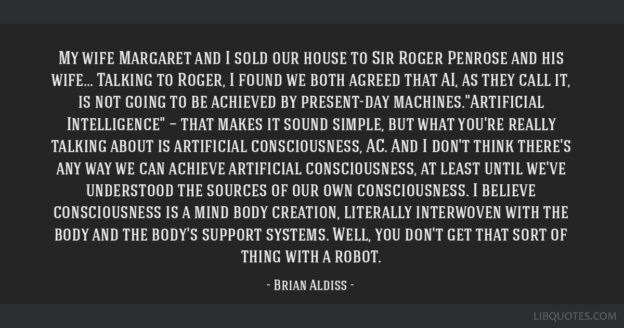A reflective exploration of Sir Roger Penrose’s intellectual contributions, spanning his three-worlds metaphysics, Gödelian critique of computational theories of mind, twistor geometry, and Orch-OR theory of consciousness. The piece situates Penrose as a singular figure whose work challenges reductionism and insists on the profound interconnection between mathematics, physics, and consciousness.
Sir Roger Penrose is that rare breed of thinker whose work spans the arcane scaffolding of mathematical physics and the deeply human realm of consciousness. To read Penrose is to step into a cathedral of intellect, where geometry hums with metaphysical significance and consciousness is not just a by-product of neural computation, but something richer, stranger, and perhaps ultimately irreducible.
This post is not a biography, nor a conventional review. Rather, it is an annotated promenade through the intellectual architecture of Penrose’s writings, with a focus on the major themes that have become his philosophical signature: non-computability, the Platonic realm, twistor theory, and his abiding suspicion that mainstream physics is too content with partial answers.
1. Three Worlds, Three Mysteries
Perhaps the most accessible of Penrose’s metaphysical ideas, though still marvellously provocative, is his “three worlds” formulation: the physical, the mental, and the Platonic. The idea, first outlined in The Emperor’s New Mind (1989) and revisited in Shadows of the Mind (1994), is that these three ontological domains are real, and that each gives rise to the others in a kind of cyclical dependency.
- The physical world gives rise to minds (via brains),
- the mental world apprehends mathematics (the Platonic),
- and the Platonic world encodes the laws that govern the physical.
It’s a deeply unfashionable idea in today’s intellectually reductionist climate. But Penrose doesn’t care for fashion, he cares for coherence.
I find this tripartite schema refreshing. In an age where “emergence” is treated as a placeholder for understanding, and where “models” are too easily mistaken for ontological commitments, Penrose dares to take metaphysics seriously—seriously enough to disagree with both the Church-Turing thesis and materialist orthodoxy.
2. Against the Algorithm: Gödel and the Mind
No survey of Penrose is complete without addressing his Gödelian argument against strong AI. In brief: Penrose believes that human mathematical insight—particularly the kind required to comprehend or even formulate the incompleteness theorems—demonstrates a capacity that no algorithmic system can replicate. This is not simply a stylistic or practical limitation, but a fundamental one.
This is, to say the least, controversial. Many computer scientists respond with weary sighs; philosophers, with sharpened knives. But as someone educated in both the formal rigour of mathematics and the psychological complexity of thought, I am sympathetic to the intuition driving Penrose’s resistance.
Even if his argument does not fully defeat computationalism, it at least raises a subtle, but damning, question: why do we remain so confident that cognition is formal, when our greatest insights often feel anything but?
3. Twistors: Geometry Before Particles
One of the delights of reading Penrose is how geometry is not just a tool, but a mode of thought. His twistor theory, an attempt to recast the fabric of spacetime using complex geometry rather than real-valued coordinates, is emblematic of this. While it remains a marginal pursuit compared to string theory or loop quantum gravity, its elegance is undeniable.
Penrose’s twistor diagrams possess a kind of visual poetry. They gesture at a pre-spacetime structure, something ontologically prior to what we experience as events. In his later collaborations with Stephen Hawking and his own explorations into conformal cyclic cosmology, the twistor idea re-emerges as a subtle unifying concept.
What strikes me here is the method: Penrose believes in following beauty. Where others build models by brute force, he listens for harmony.
4. The Conscious Universe: Orch-OR and Quantum Gravity
Perhaps the most polarising of Penrose’s positions is his partnership with anaesthesiologist Stuart Hameroff in developing the Orchestrated Objective Reduction (Orch-OR) theory of consciousness. Here, Penrose posits that quantum-level events, specifically, objective reductions of quantum states, occur in microtubules within neurons, and that these reductions somehow instantiate conscious experience.
Most neuroscientists reject this out of hand. But I am not so quick to sneer. Even if Orch-OR is wrong in detail, it is correct in ambition: it insists that consciousness is not epiphenomenal and that it must have ontological standing in our physical theories.
Penrose is asking a real question: What sort of physics would be required to make consciousness intelligible? Most of his critics are not.
5. Final Thoughts: A Mind Beyond Method
There is a certain loneliness to Penrose’s position in the scientific world. He is revered, knighted, and awarded the Nobel Prize. But he remains intellectually isolated—a geometer in a world of data analysts, a Platonist among instrumentalists.
What I value most in Penrose is his refusal to rush to answers. His books are long not because they are indulgent, but because they take the reader seriously. He assumes you want to understand, and if you don’t, he will teach you, from complex numbers to general relativity.
Reading Penrose reminds me why I fell in love with mathematics and physics in the first place: not because they yield power, but because they reveal structure. And because, occasionally, they let us peer, just for a moment, beyond the veil.
Further Reading
- The Emperor’s New Mind – Where it all begins. A tapestry of mathematics, computation, and the philosophy of mind.
- Shadows of the Mind – Where the argument sharpens, and the Gödelian challenge becomes more precise.
- Fashion, Faith and Fantasy in the New Physics of the Universe – A scathing critique of modern theoretical physics’ dependence on untestable frameworks.
- Cycles of Time – His most elegant foray into cosmology; speculative but dazzling.
